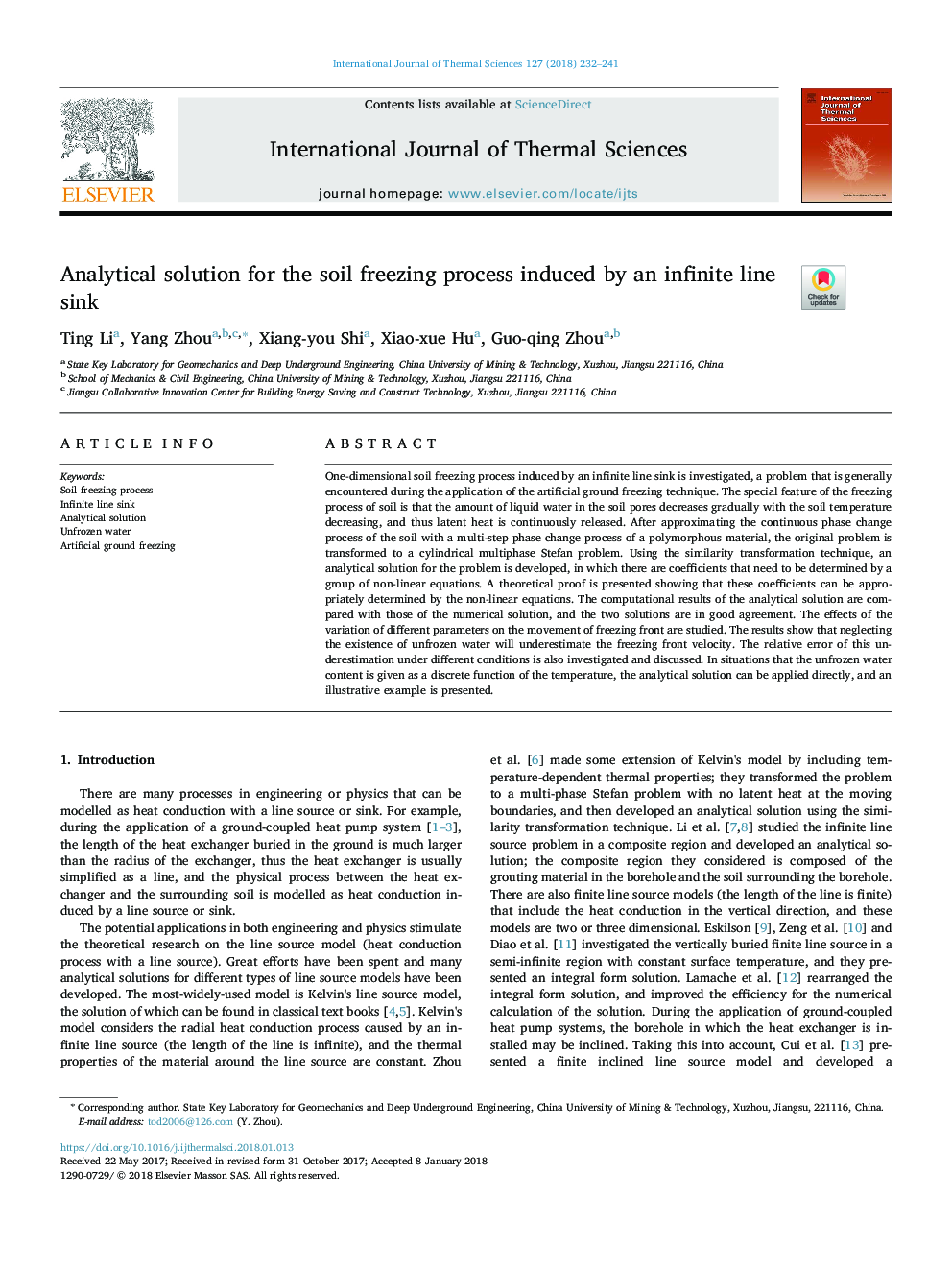| Article ID | Journal | Published Year | Pages | File Type |
|---|---|---|---|---|
| 7060765 | International Journal of Thermal Sciences | 2018 | 10 Pages |
Abstract
One-dimensional soil freezing process induced by an infinite line sink is investigated, a problem that is generally encountered during the application of the artificial ground freezing technique. The special feature of the freezing process of soil is that the amount of liquid water in the soil pores decreases gradually with the soil temperature decreasing, and thus latent heat is continuously released. After approximating the continuous phase change process of the soil with a multi-step phase change process of a polymorphous material, the original problem is transformed to a cylindrical multiphase Stefan problem. Using the similarity transformation technique, an analytical solution for the problem is developed, in which there are coefficients that need to be determined by a group of non-linear equations. A theoretical proof is presented showing that these coefficients can be appropriately determined by the non-linear equations. The computational results of the analytical solution are compared with those of the numerical solution, and the two solutions are in good agreement. The effects of the variation of different parameters on the movement of freezing front are studied. The results show that neglecting the existence of unfrozen water will underestimate the freezing front velocity. The relative error of this underestimation under different conditions is also investigated and discussed. In situations that the unfrozen water content is given as a discrete function of the temperature, the analytical solution can be applied directly, and an illustrative example is presented.
Related Topics
Physical Sciences and Engineering
Chemical Engineering
Fluid Flow and Transfer Processes
Authors
Ting Li, Yang Zhou, Xiang-you Shi, Xiao-xue Hu, Guo-qing Zhou,
